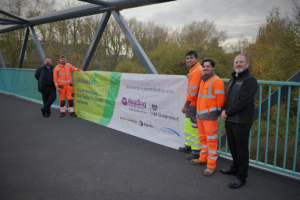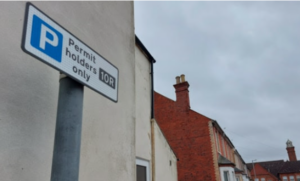Two new School Streets which create a healthier and safer environment for pupils around schools have launched in Reading this week.
Civitas Academy has started a scheme which restricts traffic access outside the school in Great Knollys Street in central Reading.
And Geoffrey Field Infant School, Geoffrey Field Junior School and Christ the King Roman Catholic Primary School, have introduced a scheme in Exbourne Road, Whitley.
The School Streets initiative was introduced by the Council in 2020 to improve the environment around schools during morning drop-off and afternoon pick-up times. They aim to encourage more pupils to walk, cycle or scoot to school to help reduce traffic congestion and improve air quality around schools.
The new locations bring the number of School Streets in the borough up to six, and covering 10 schools.
Both schemes are being introduced on a six-month experimental basis after informal consultations with neighbours and parents showed support for the plans.
The Great Knollys Street scheme restricts access to all but eligible vehicles immediately to the east of its junction with Bedford Road up to the point of an existing traffic restriction outside the Reading Buses depot. The times of closure are between 8.30-9am and 2.55-3.40pm, Monday to Friday, during term time.
The Exbourne Road scheme allows for the road’s closure at its entrance from the roundabout with Blandford Road and Meadowcroft Road between 8.20-9.05am and 2.50-3.30pm, Monday to Friday, during term time.
Residents who live within the affected areas still have full access during the school street closure, including for visitors and deliveries.
John Dibdin, Headteacher of Geoffrey Field Junior, Zoe Dean, Headteacher of Geoffrey Field Infants and Nikki McVeigh, Headteacher of Christ the King, said in a joint statement: “For some time now, the three neighbouring schools on Exbourne Road have shared a concern for the safety and wellbeing of children and families on their way to and from school. Exbourne Road is a narrow, no-through road and the traffic at the beginning and end of the school day can be very intense. We’ve all had comments from parents and residents about the risks that this poses to the children as well as parents, carers and staff.
“Over a year ago, the three schools met together to pursue the idea of introducing a ‘School Street’ plan for the road. We have now gone through the various stages of consultation and planning, supported by Sustrans, local councillors and the RBC transport team. We were delighted with the overwhelmingly positive support from children, parents and residents – indicating that there is a real shared desire to make a difference. The project will involve closing the road for about 40 minutes at ‘drop off’ and ‘pick up’ times. We are really delighted that this project has gone live as part of its trial period on Monday 8th July. The three schools are sharing the responsibility of marshalling the closure – initially using school staff, but we hope to include parents, carers or other volunteer members of the community once the project is up and running.
“This has been a lovely example of schools working collaboratively with the community and each other for the benefit of all the children and we’re really proud to have got to this stage. It will also benefit the children’s health, as it will encourage more to walk, ride or scoot to school and will reduce pollution near the schools. The three schools participating in this project are Geoffrey Field Junior School, Geoffrey Field Infant School and Christ the King Catholic Primary School. “
Councillor John Ennis, Lead Councillor for Climate Strategy and Transport, said: “It is great to see the number of School Streets in the borough expanding.
“Pupils from four more schools will now benefit from a safer, healthier and more pleasant environment around their school and I hope it encourages more of them to walk, cycle or scoot in.
“We have seen the success of other School Streets around Reading and I would encourage more headteachers to consider a scheme, which would promote a cleaner and healthier school run with improved air quality for pupils, staff and neighbours.”
At the end of the six-month experimental period, further assessments of both new schemes will be carried out, and decisions made whether to make them permanent.
PIC-READINF COUNCIL






















